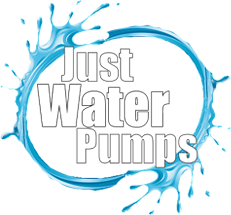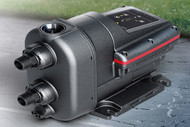Household Water Pump Guide
4th Jun 2019
Basic Household Pump Selection Guide
Selecting the most appropriate household pump model for your application is important as you want the right size pump to do the job. Firstly, we need to look at two important factors - That being the Pump Flow Rate needed & the Pressure required.
Flow rate / How much water will be required..?
Work out the number of taps or outlets (inside and outside) that are likely to be on at the same time. Remembering different taps / outlets have different flow rates i.e 6 L/min per toilet, 10 L/min per shower, 15 L/min per tap, etc)
Some examples of common applications are listed below :-
- Small cottages and weekenders which might use, say a shower and a kitchen tap at the same time would benefit from a household pump with a max flow rate of 25LPM (the shower being rated at 10LPM and the tap at 15 LPM, a total of 25LPM)
- Small to average homes which would commonly use maybe up to 3 taps, so say the toilet, shower and a tap, at the same time would benefit from a household pump with a max flow rate of around 35LPM (the toilet being rated at 6LPM, the shower at 10LPM and the tap at 15 LPM)
- Average sized homes with modern appliances would look at allowing for up to 4 different tap combinations, so a 50LPM household pump would be recommended.
- Larger homes with more than one bathroom should allow for up to 6 different tap combinations, so a household pump rated up to 70LPM would be suitable.
- Large homes and families that need up to 7 taps, and the chance of outside watering / irrigation should look to a household pump that is rated around the 90 LPM and upwards
Once you have worked out your required flow rate, you will need to work out how much pressure will be needed.
How much pressure is required..?
A suitable pressure we recommend is 300 kpa or 42 psi working pressure. This means pressure at the required flow. (not max pressure), a rule of thumb is to add 10% to your pressure required, but if you have a lot of small pipes or your pipes are long (tank is a long way from the house), you will need more.
A household pump providing up to 300kpa is a adequate pressure for most single storey buildings. Pressure requirements that need up to 500kpa are for when long runs of pipe have been installed or when a pump is required for multi storey buildings.
Different types of household pumps - Which one should i choose..?
There a few choices when it comes to household pumps - Multistage / Jet / Variable Speed / Submersible etc.. A brief description (below) on each will help determine which type will suit your application
- Multistage Household Pumps - This type of pump is the most popular as it provides great pressure and flow for a household application, and are very efficient. They are ideal for meduim to large homes, and long runs of piping
- Jet Household Pumps - Jet Pumps are self priming which are ideal for long and difficult suction applications, like sucking from a dam or creek, they are less efficient but handle air alot better than the other household pump types
- Variable Speed Pumps - This type of pump is the latest type, its new technology, bringing different types of household pumps together with a variable speed motor, which is by far the most efficient and energy saving type on the market. The variable spped motor will only run at the required speed needed when pumping saving on electricity costs
- Submersible Household Pumps - A pump that can be in your tank or down a bore, most models available will be a multistage type as they need to provide good pressure to pump straight up before pumping around the house.
What type of controller should my household pump have..?
A automatic constant pressure controller is by far the most popular, and each manufacturer has their own type, but they all do the same job - provide constant pressure and run dry protection (meaning the controller turns on and off automatically when water is needed from a outlet , and wont turn on if there is no water from the source)
Another type of controller is the pressure switch and tank combination, which work together to provide a automatic pressure system, but with a tank either fitted on the pump or beside it, the pump wont turn on until the water has drained from the pressure tank, which means the pump does not start as frequently as a constant pressure controlled pump. So if you were to wash your hands from a basin, a pump with a pressure tank installed will use the water from the pressure tank first, and not start the pump, untill the water from the pressure tank has been drained.
Brands, without a doubt there are many.
Major quality brands for domestic pumps in Australia are Grundfos, DAB , Lowara, Davey, Onga, and Ebara. There are also alot of brands that claim to be a major top quality brand but i would argue these pumps have a long way to go before meeting this catergory. There are also alot of cheaply made pump brands, which are commonly found on auction sites like ebay etc.
If you are looking for a good quality household pump, our personal preference is GRUNDFOS. There are multiple reasons for this. 1. Long history of high quality product. 2. The modern Grundfos philosphy is to look at the Life Cylce cost. They look at making a pump that will last a long time, be cheaper to operate and be made with materails of less embodied energy (more enviromentally friendly materials). The result is simply a cheaper Life cycle cost. They would argue that although you pay a bit more to begin with, there pumps will generally be cheaper over time compared to even the cheaply made pumps or low end pumps.
Click here to view our full range of Household Pumps
If still in doubt contact us , and we can recommend the most suitable pump for your application.



